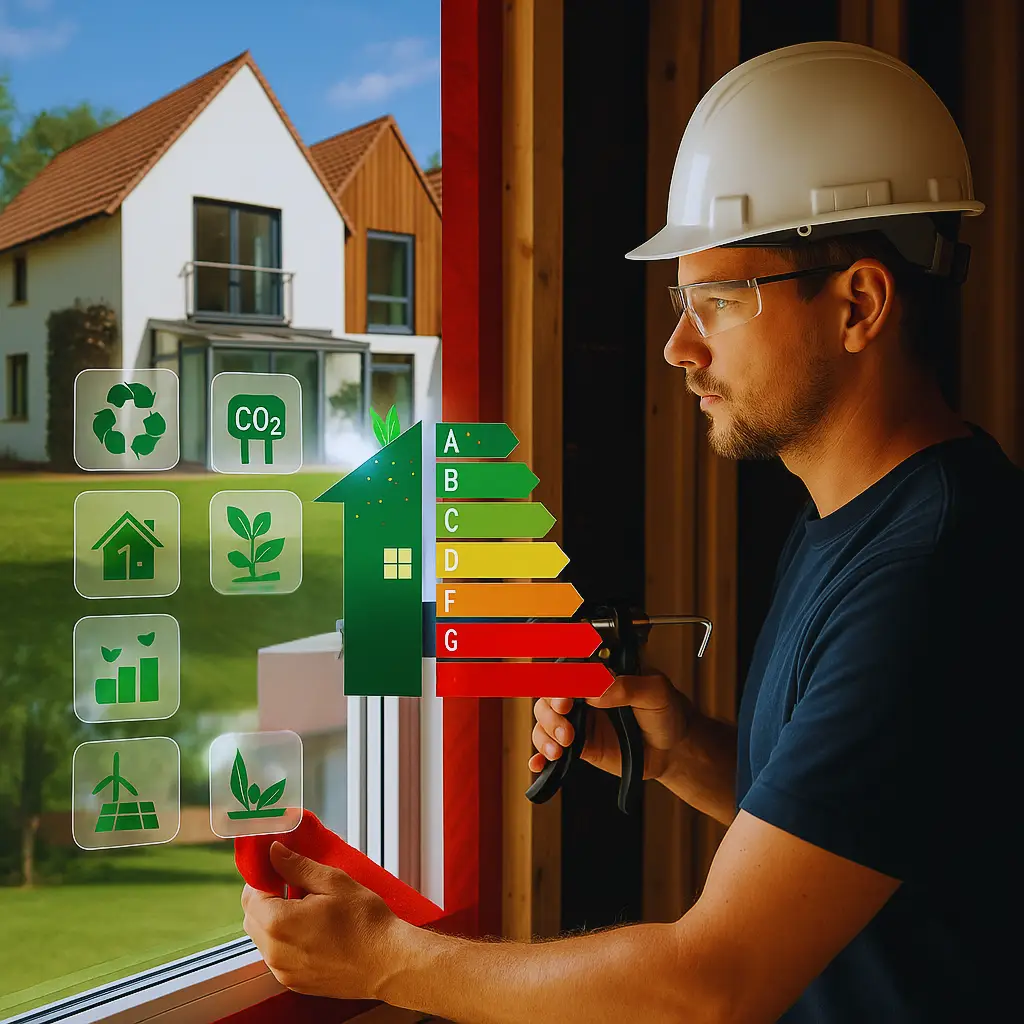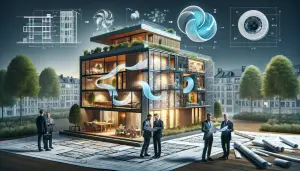Understanding SAP Calculation for Homes
When you’re building a new home or refurbishing an existing one, there’s a lot of planning involved. One key part of the process is making sure your home meets energy performance standards. That’s where SAP calculations come in. These calculations are used across the UK to measure a building’s energy efficiency. If you’re planning a new build or working on a refurbishment project, getting an accurate SAP calculation is not only useful but essential.
We at Ratio Seven offer professional SAP calculations with accuracy, plus guidance throughout your project. Whether you’re a builder, self-builder, architect or developer, our team works closely with you to make sure everything runs smoothly from the first drawings through to completion.
What Are SAP Calculations?
SAP stands for Standard Assessment Procedure. It’s the method the government uses to measure how energy efficient a home is. You’ll need a SAP calculation to get your Energy Performance Certificate (EPC), which you must have when completing a new build or making changes to an existing property.
These ratings take into account key details such as:
- The materials used to build or refit the house
- The heating and hot water systems
- The type of insulation
- Ventilation features
- Renewable technologies like solar panels, if used
The result is a score that reflects how much energy the home will use. A higher SAP score means the home is more energy-efficient, giving it a better EPC rating. This helps potential buyers or renters know they will spend less on energy bills and live in a warm and comfortable house.
When Do You Need a SAP Calculation?
There are quite a few times when a SAP calculation will be necessary:
- If you’re building a new home
- When adding a large extension
- If you’re converting a building (for example, turning a barn into a home)
- Making changes that affect the building’s energy use, such as upgrading heating systems or windows
We’ve worked with many clients in each of these situations. When building a new house, you’ll normally need a calculation at the design stage (to get Building Control approval) and then again once it’s built, so you can get your EPC.
You can find out more about how we work with builders on SAP calculations for new builds.
How Do SAP Calculations Work?
To carry out a SAP calculation, we begin with your design drawings. From these, we build a digital model with information about the walls, floors, roof, windows, and mechanical systems like heating and ventilation. We’ll also look at the orientation of the house and local weather details.
Then we use software approved by the government to calculate an energy efficiency score. This includes checking how much energy is used for heating, hot water, lighting and whether any is saved with renewables like solar panels.
We usually provide two SAP calculations:
- A design-stage SAP to show how your planned build meets regulations
- An as-built SAP once construction is complete, including an EPC
We’ll guide you through both steps to make sure everything goes smoothly.
You can read more about this on our SAP calculation service page.
What Happens If My Project Fails the SAP Calculation?
If your house doesn’t meet the required energy performance for new or existing buildings, don’t stress. You’re not alone, and this happens more often than you’d think.
We’ll look at the data and offer simple recommendations to improve the rating.
This might include:
- Upgrading insulation
- Adding more efficient windows
- Using a higher-rated boiler
- Improving airtightness
- Installing solar panels
We’ve helped many clients make small changes that result in big improvements. And we’re happy to explain everything in simple terms, so you can make the best choices for your project.
Do Refurbishments Also Need SAP Calculations?
Yes, and this often surprises people. If you’re making a large change to a property, say, turning a three-bedroom house into flats or adding an extension of more than 30 square metres, you may need a SAP calculation.
Building Control will want to see that your project meets carbon emissions targets under Part L of the Building Regulations. A SAP calculation helps prove that.
If you’re unsure whether your refurbishment needs one, feel free to reach out to us at Ratio Seven, and we’ll help you understand what’s needed. Every project we work on is different, but our approach is always clear, friendly, and practical.
Let’s Talk Energy Performance Certificates (EPCs)
Once the build or refurbishment is finished, your next step is to get an EPC. This is a legal requirement for selling or renting the property. The EPC shows the energy rating from A (very efficient) to G (not efficient).
We generate your EPC from the completed SAP calculation. If there are any issues getting your target rating, we’ll chat through them and look at simple fixes.
We can usually issue your EPC within a few days of the final data being submitted. Quick and hassle-free.

FAQs
Do I need a SAP calculation for an extension?
If your extension includes lots of new glass or increases the home’s size significantly, probably yes. Building Control will let you know early on, or we can check for you.
How much does a SAP calculation cost?
Prices depend on project size. For a single home, most SAP calculations fall within a few hundred pounds. We’ll always give you a clear quote up front.
How long does it take to get a SAP calculation?
Usually just a few days, as long as we have all the information. Faster if you’re in a rush and we have your drawings ready.
Can I still meet SAP targets if I don’t have solar panels?
Yes. There are lots of other ways to improve your EPC score. Good insulation, air-tightness, and energy-efficient heating can all help.
What happens if I make changes during the build?
No problem. Let us know so we can update your SAP. Changes could affect your score, and we’ll help keep everything on track.
Working with Ratio Seven
At Ratio Seven, we’ve worked with all types of projects, small and large, from city flats to countryside homes. We take pride in offering a simple and helpful service that takes the stress out of building regulations.
Our team doesn’t like guesswork. We focus on giving clear, reliable SAP calculations that you and Building Control can trust. With us, you don’t just tick a box; you get peace of mind that your home is well designed for energy use.
Explore more about how we help with SAP calculations for new builds and larger property refurbishments.
Wrap-Up and What to Do Next
Getting a SAP calculation is an essential part of building or updating a home. It’s not just about ticking off a regulation; it helps you design a place that keeps warm in winter, comfortable in summer, and doesn’t waste energy.
We at Ratio Seven know how to take care of the details so you don’t have to. From the early planning right through to the final EPC, we’re here to help you get it right.
If you’re starting a new project, now is a great time to speak with our team. Contact us via our website, and we’ll answer any questions or walk you through what’s needed. Whether it’s for a brand-new home or a major renovation, we’re ready when you are.




